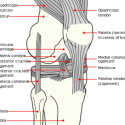Author Interviews, Dermatology / 03.04.2015
RNA Sequencing Helps Unravel Disease Pathology In Atopic Dermatitis
 MedicalResearch.com Interview with:
Emma Guttman-Yassky, MD, PhD
Department of Dermatology
Icahn School of Medicine at Mount Sinai Medical Center
New York, NY 10029
Medical Research: What is the background for this study? What are the main findings?
Dr. Guttman-Yassky: Atopic dermatitis/AD is the most common inflammatory skin disease. Increased knowledge about the molecular phenotype of atopic dermatitis has contributed to development of novel therapeutics, including trials with targeted therapeutics. Genomic skin data from these trials largely rely on microarrays that are based on hybridization of labeled RNA/cDNA to single stranded DNA sequences that translate to expression levels. We have recently shown that the atopic dermatitis transcriptome (defined as differentially expressed genes [DEGs] between lesional and non-lesional skin) is reversible with broad and specific therapeutics. For future mechanistic studies within clinical trials, it is important to determine the agreement between microarrays and RNA-seq and to evaluate whether RNA-seq offers additional benefits. This is the first report of the lesional atopic dermatitis phenotype by RNA-seq, and the first direct comparison between the microarray and RNA-seq platforms in this disease. Both platforms robustly characterize the AD transcriptome. Through RNA-seq, we unraveled novel atopic dermatitis disease pathology, including increased expression of the novel TREM-1 signaling pathway and IL-36 cytokine, which might have a pathogenic role in atopic dermatitis. Importantly, good agreement with real time PCR, which serves as the "gold standard" for detection of gene expression was observed for both technique. Overall good agreement was observed with RT-PCR for both RNA-seq and microarrays, but key atopic dermatitis immune cytokines (such as interleukin 13, and interleukin 22), which are highly elevated in atopic dermatitis lesions were only detected by RT-PCR. Overall, both RNA-seq and microarrays can similarly characterize the lesional AD transcriptome and serve as valuable tools for molecular tissue studies within large clinical trials and a core atopic dermatitis pathology is common to microarray and the RNA-seq transcriptomes. RNAseq might play a complementary role for unravelling novel disease pathology, although analyses tools for RNAseq are still being developed.
(more…)
MedicalResearch.com Interview with:
Emma Guttman-Yassky, MD, PhD
Department of Dermatology
Icahn School of Medicine at Mount Sinai Medical Center
New York, NY 10029
Medical Research: What is the background for this study? What are the main findings?
Dr. Guttman-Yassky: Atopic dermatitis/AD is the most common inflammatory skin disease. Increased knowledge about the molecular phenotype of atopic dermatitis has contributed to development of novel therapeutics, including trials with targeted therapeutics. Genomic skin data from these trials largely rely on microarrays that are based on hybridization of labeled RNA/cDNA to single stranded DNA sequences that translate to expression levels. We have recently shown that the atopic dermatitis transcriptome (defined as differentially expressed genes [DEGs] between lesional and non-lesional skin) is reversible with broad and specific therapeutics. For future mechanistic studies within clinical trials, it is important to determine the agreement between microarrays and RNA-seq and to evaluate whether RNA-seq offers additional benefits. This is the first report of the lesional atopic dermatitis phenotype by RNA-seq, and the first direct comparison between the microarray and RNA-seq platforms in this disease. Both platforms robustly characterize the AD transcriptome. Through RNA-seq, we unraveled novel atopic dermatitis disease pathology, including increased expression of the novel TREM-1 signaling pathway and IL-36 cytokine, which might have a pathogenic role in atopic dermatitis. Importantly, good agreement with real time PCR, which serves as the "gold standard" for detection of gene expression was observed for both technique. Overall good agreement was observed with RT-PCR for both RNA-seq and microarrays, but key atopic dermatitis immune cytokines (such as interleukin 13, and interleukin 22), which are highly elevated in atopic dermatitis lesions were only detected by RT-PCR. Overall, both RNA-seq and microarrays can similarly characterize the lesional AD transcriptome and serve as valuable tools for molecular tissue studies within large clinical trials and a core atopic dermatitis pathology is common to microarray and the RNA-seq transcriptomes. RNAseq might play a complementary role for unravelling novel disease pathology, although analyses tools for RNAseq are still being developed.
(more…)


















